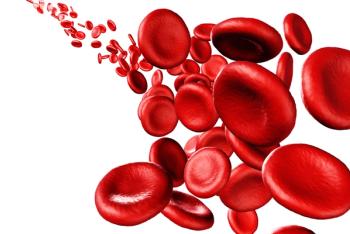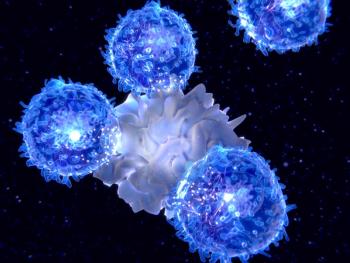
AI Prognostic Tool Confirms Concordance Through Epigenomic Signatures in AML
Both experimental models significantly improved upon historical clinical risk trial groups for patients with acute myeloid leukemia.
The Acute Leukemia Methylome Atlas (ALMA) artificial intelligence tool confirmed high concordance between epigenomic signatures and genomic lesions through clinical validation of samples of patients with acute myeloid leukemia (AML), according to a study published in Nature Communications.1
A diagnostic model within ALMA named ALMA Subtype accurately stratified and predicted 17 WHO2022 subtypes plus otherwise-normal control through DNA methylation. With these subtypes added to the discovery dataset with WHO 2022 diagnosis annotation (n = 2471), the per-class 5-fold cross-validation concordance score ranged from 0.74 with AML with t(v;11q23) and 0.8 with myelodysplastic syndrome (MDS)-related, secondary myeloid to 1.00 with 16 other categories.
The overall metrics for the discovery/training set demonstrated an accuracy of 0.896, a weighted F1 score of 0.927, and a Cohen’s Kappa of 0.888. In test sets, the AML02,08 cohort had an accuracy of 0.875, a weighted F1 score of 0.924, and a Cohen’s Kappa of 0.825; in the NOPHO AML cohort, the accuracy was 0.895, the weighted F1 score was 0.925, and Cohen’s Kappa was 0.869.
The investigators noted that the results alluded to negligible overfitting and rigorous performance in independently processed test datasets.
Additionally, the prognostic model AML Epigenomic Risk was able to predict the probability of death within 5 years for patients with AML. In the discovery cohort (n = 946), the AML Epigenomic Riskhigh group showed a markedly poorer overall survival (OS; HR, 4.40; 95% CI, 3.45-5.61; P <.0001) and event-free survival (EFS; HR, 2.39; 95% CI, 2.00-2.86; P <.0001) compared with AML Epigenomic Risklow. Further, in the AML02,08 cohort (n = 200), the AML Epigenomic Riskhigh group had lower OS (HR, 4.20; 95% CI, 2.36-7.45; P <.0001) and EFS (HR, 3.26; 95% CI, 2.07-5.15; P <.0001) vs the AML Epigenomic Risklow group. The NOPHO pediatric AML test cohort demonstrated that AML Epigenomic Riskhigh also correlated unfavorably with 5-year OS (HR, 2.48; 95% CI, 1.34-4.61; P = .0039).
An alternative approach utilized DNA methylation values of 38 CpGs; an epigenome-wide association study (EWAS) adjusted for risk group assessment identified 200 CpGs associated with 5-year time-to-death at a p-value threshold of 10e-5.
In the discovery cohort, those with the 38-CpG AML Signaturehigh had worse OS (HR, 3.84; 95% CI, 3.01-4.91; P <.0001) and EFS (HR, 2.22; 95% CI, 1.85-2.65; P <.0001) vs those with the 38-CpG AML Signaturelow. Results were consistent in the AML02,08 cohort, with OS (HR, 3.23; 95% CI, 1.75-5.97; P = .0002) and EFS (HR, 3.22; 95% CI, 1.95-5.33; P <.0001) being favored in the low group.
In an analysis of the AML Epigenomic Risk, 38-CpG AML Signature, and clinical risk trial groups, it was found that both experimental models significantly improved upon the current risk group classification for patients with AML.
“Currently, clinicians often wait weeks for diagnostic lab results, but with our pipeline, this wait time can be reduced to 2 to 3 days for a preliminary diagnosis. This single-test assay, requiring only a laptop-sized sequencer, can be run in-house, lowering costs, widening access and improving long-term remission globally,” stated Jatinder Lamba, PhD, associate dean for research and graduate education, a professor of pharmacotherapy and translational research, the Frank A. Duckworth Eminent Scholar Chair, and co-leader of the UF Health Cancer Center’s Cancer Targeting and Therapeutics research program, said in a press release.2 “By using our prognostic features, a clinician can predict whether the patient has a higher likelihood of having a relapse, allowing the health care team to make decisions about intensifying the patient’s therapy, monitoring the patient more closely, or even reassessing the need for transplants.”
ALMA was designed with the unsupervised dimension reduction algorithm Pairwise Controlled Manifold Approximation (PaCMAP); PaCMAP compressed methylation values of 331.556 CpGs into 2 dimensions for visualization and 5 dimensions for subtype and risk classification.
Raw data were harmonized and assembled from publicly available methylation datasets of acute leukemias from 11 clinical trials/studies; a total number of 3314 patients was achieved after preprocessing and quality control assessment. Regarding the ALMA Subtype model, a subset of 2471 samples was chosen for having WHO 2022 diagnostic annotation data.
The AML Epigenomic Risk model used 946 AML-only peripheral blood or bone marrow samples at diagnosis. The target output was OS at 5 years. The 38 CpG AML Signature conducted an EWAS using Cox proportional hazards regression to identify CpGs with methylation levels most predictive of OS at 5 years while adjusting for risk group categories.
One of the primary limitations of ALMA revolved around rare AML subtypes. An example highlighted a male between 0 and 5 years old initially diagnosed with Down Syndrome AML who was predicted to have AML with NUP98 fusion/MDS secondary myeloid, with trisomy 21 confirmed genomically, but no detected NUP98 fusion.
References
- Marchi F, Shastri VM, Marrero RJ, et al. Epigenomic diagnosis and prognosis of acute myeloid leukemia. Nat Commun. Published online July 29, 2025. doi:10.1038/s41467-025-62005-4
- AI tool speeds acute myeloid leukemia diagnosis. Press release. UF Health. August 4, 2025. Accessed August 25, 2025. https://tinyurl.com/2uh6j6fx
Newsletter
Stay up to date on recent advances in the multidisciplinary approach to cancer.


















































































